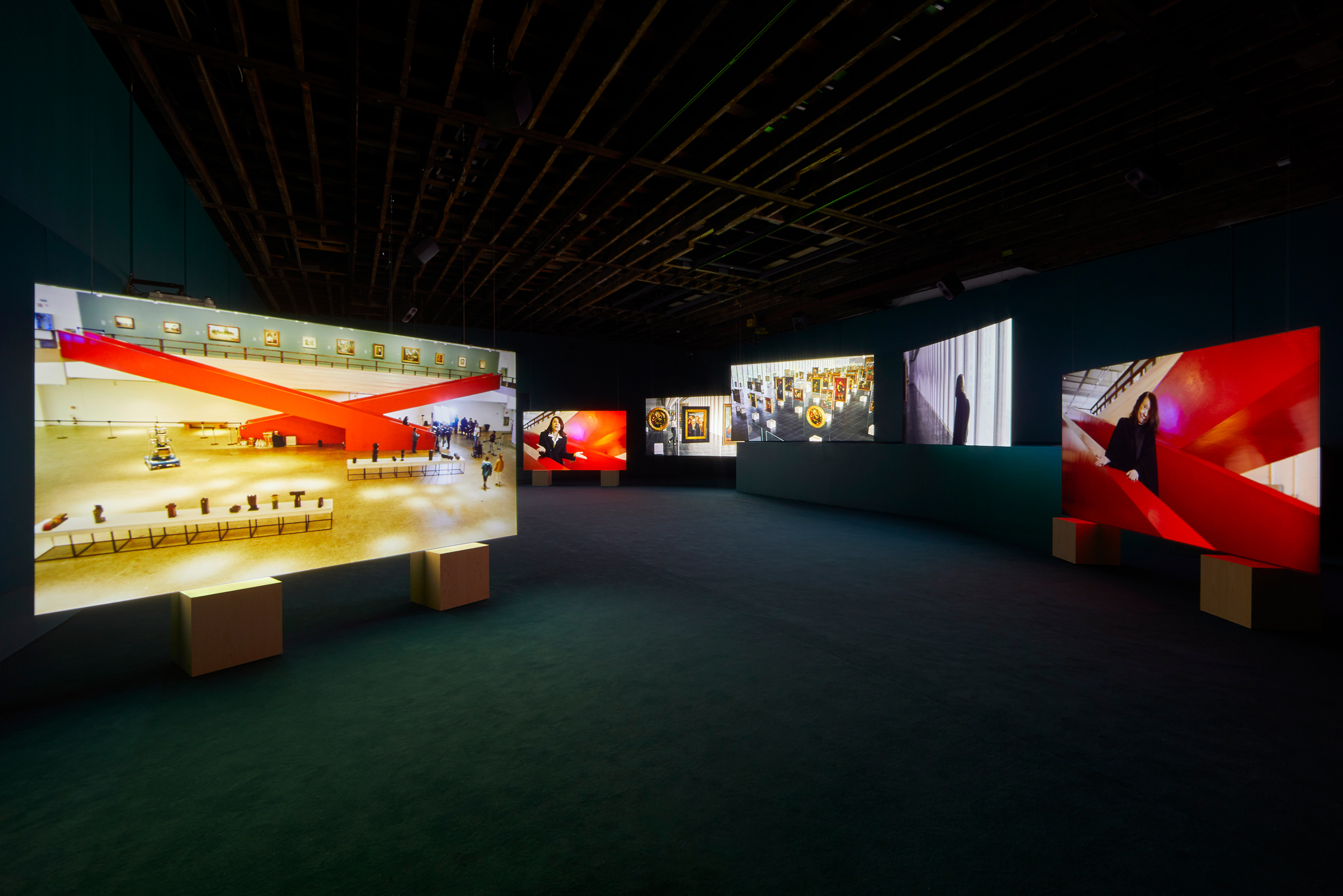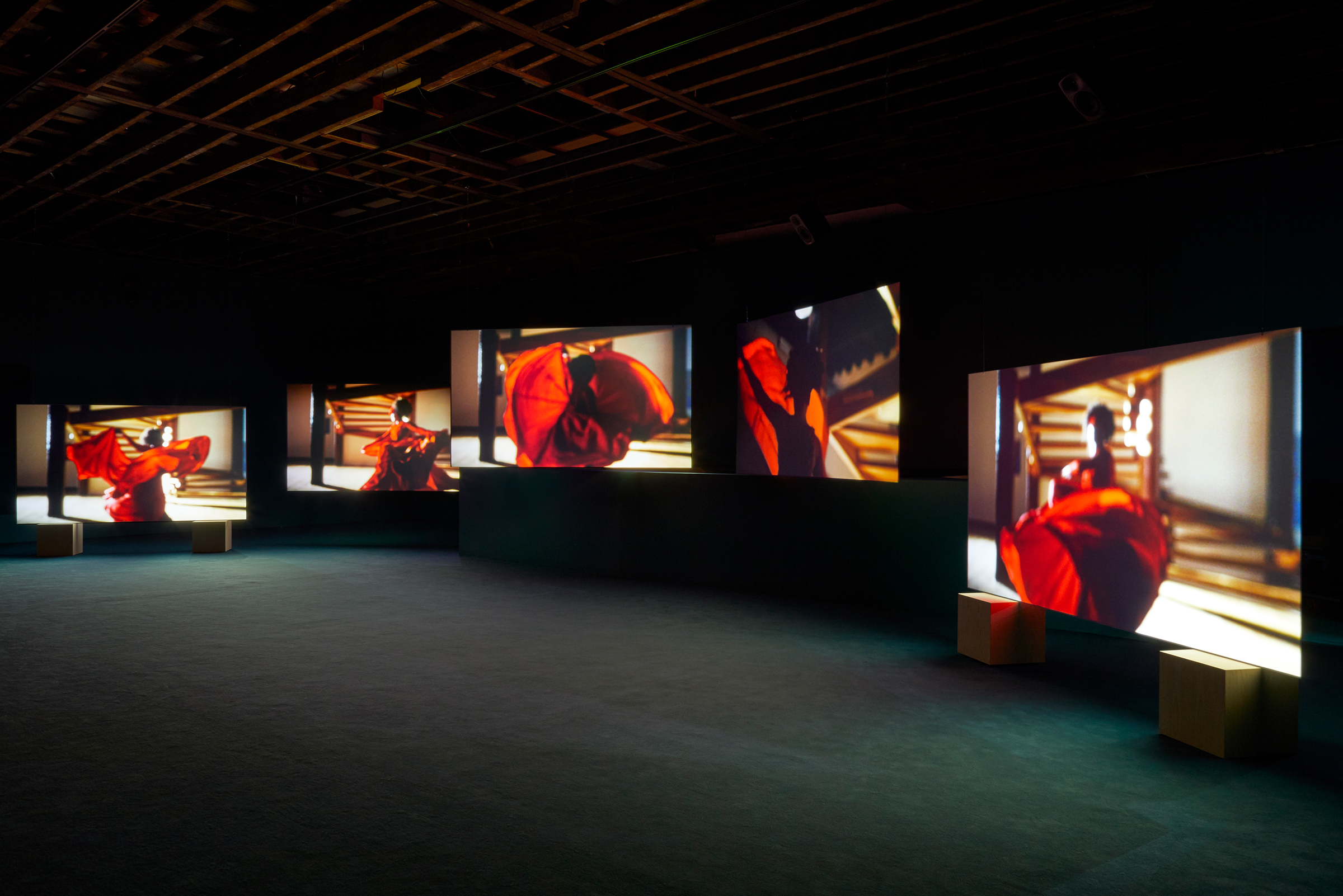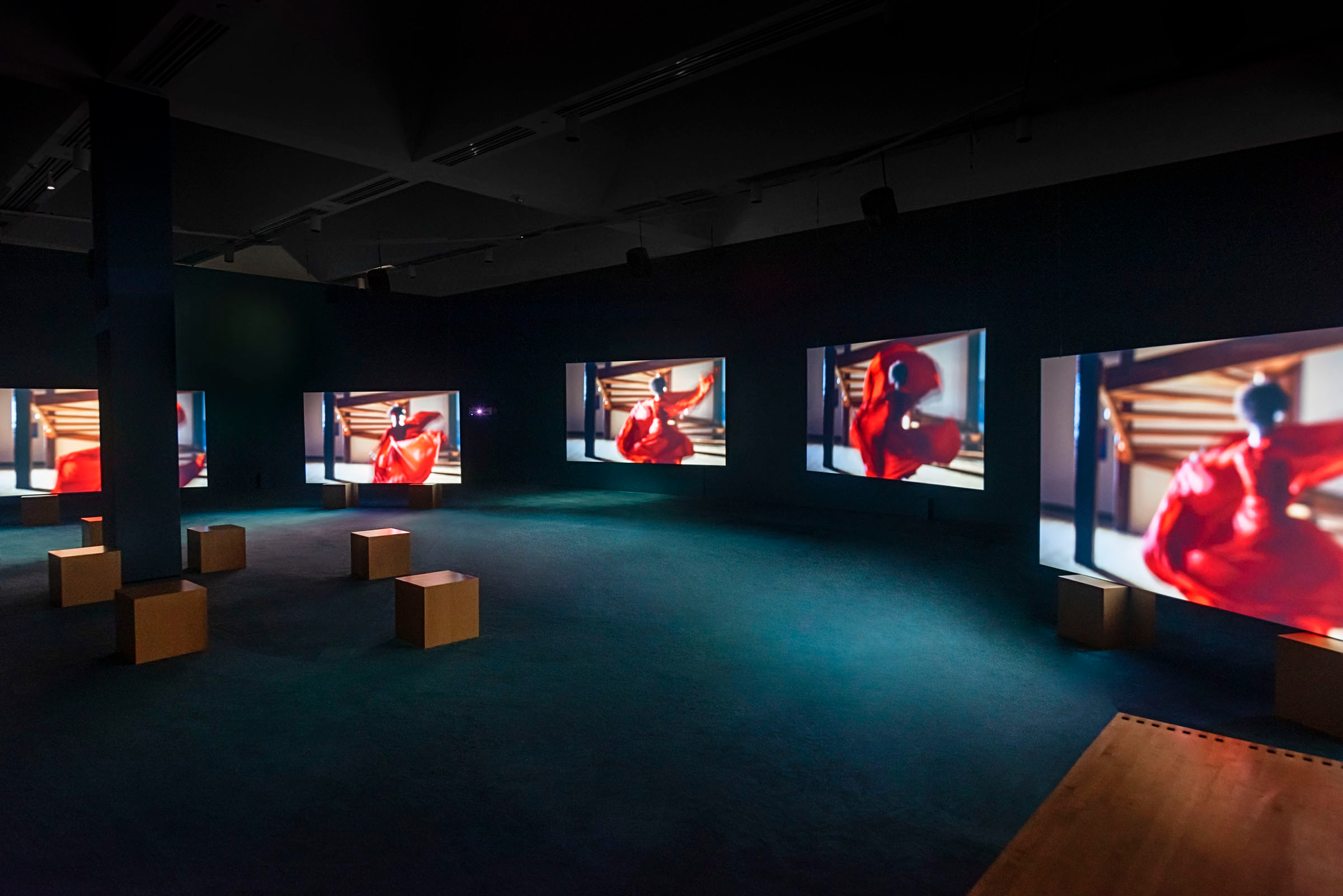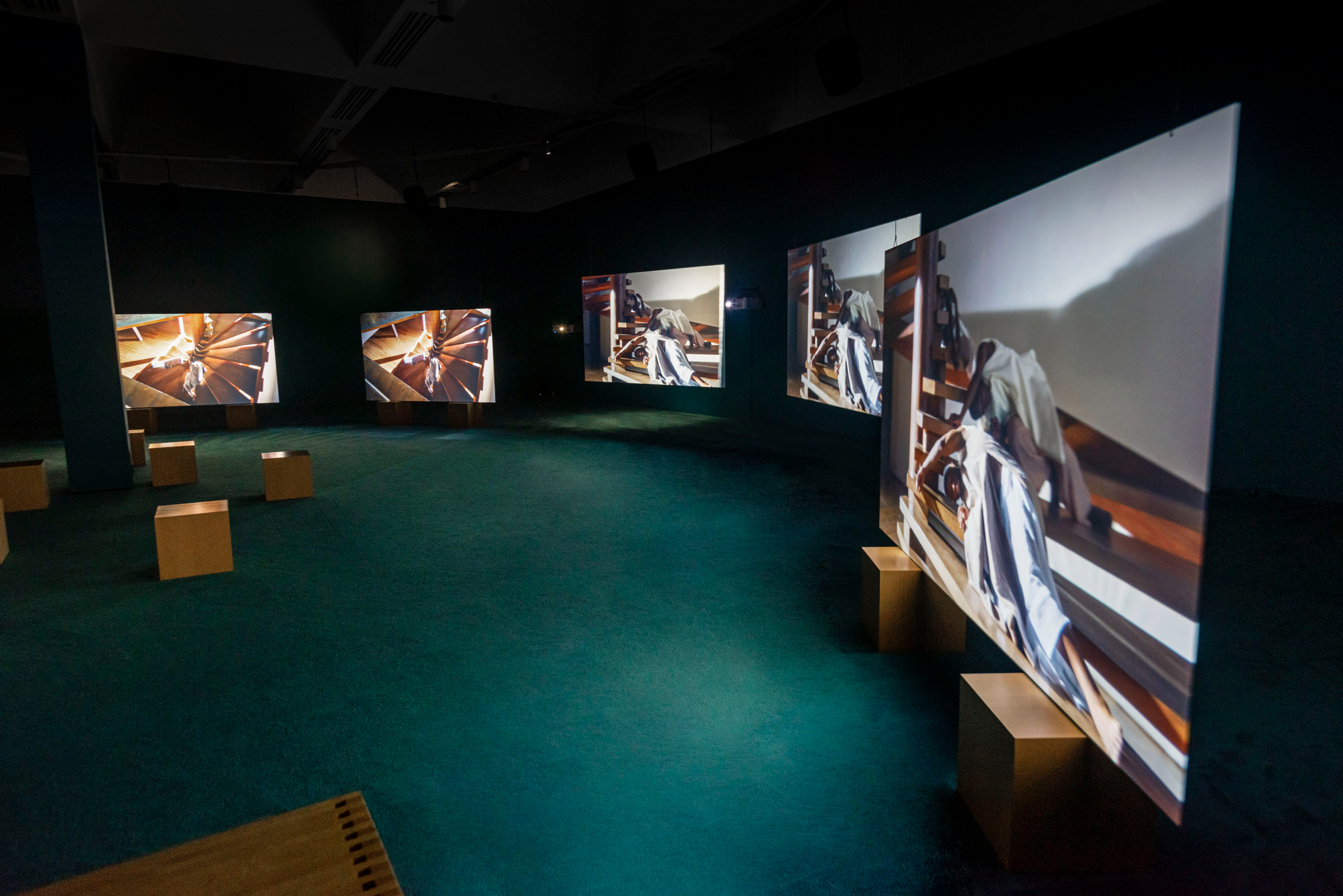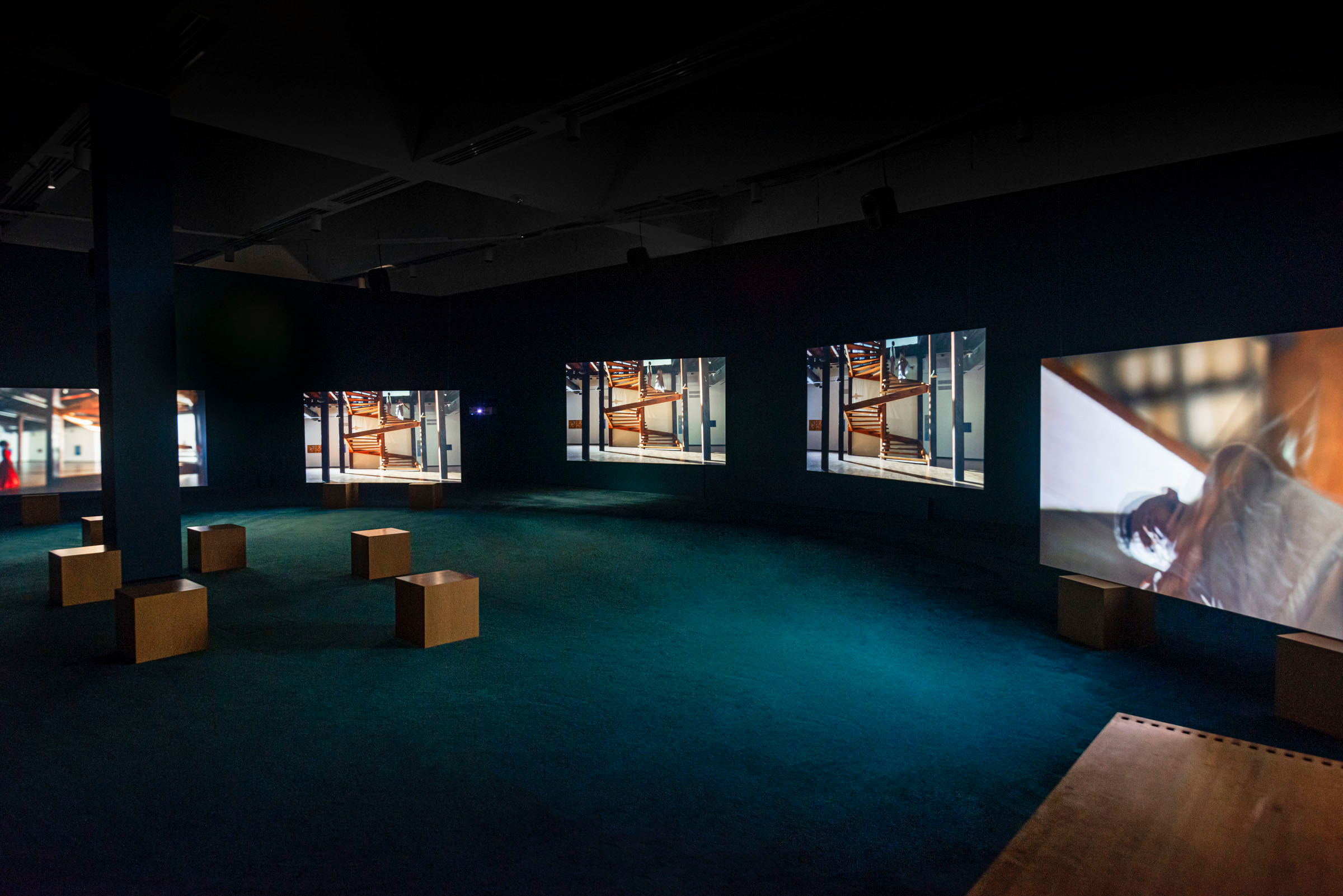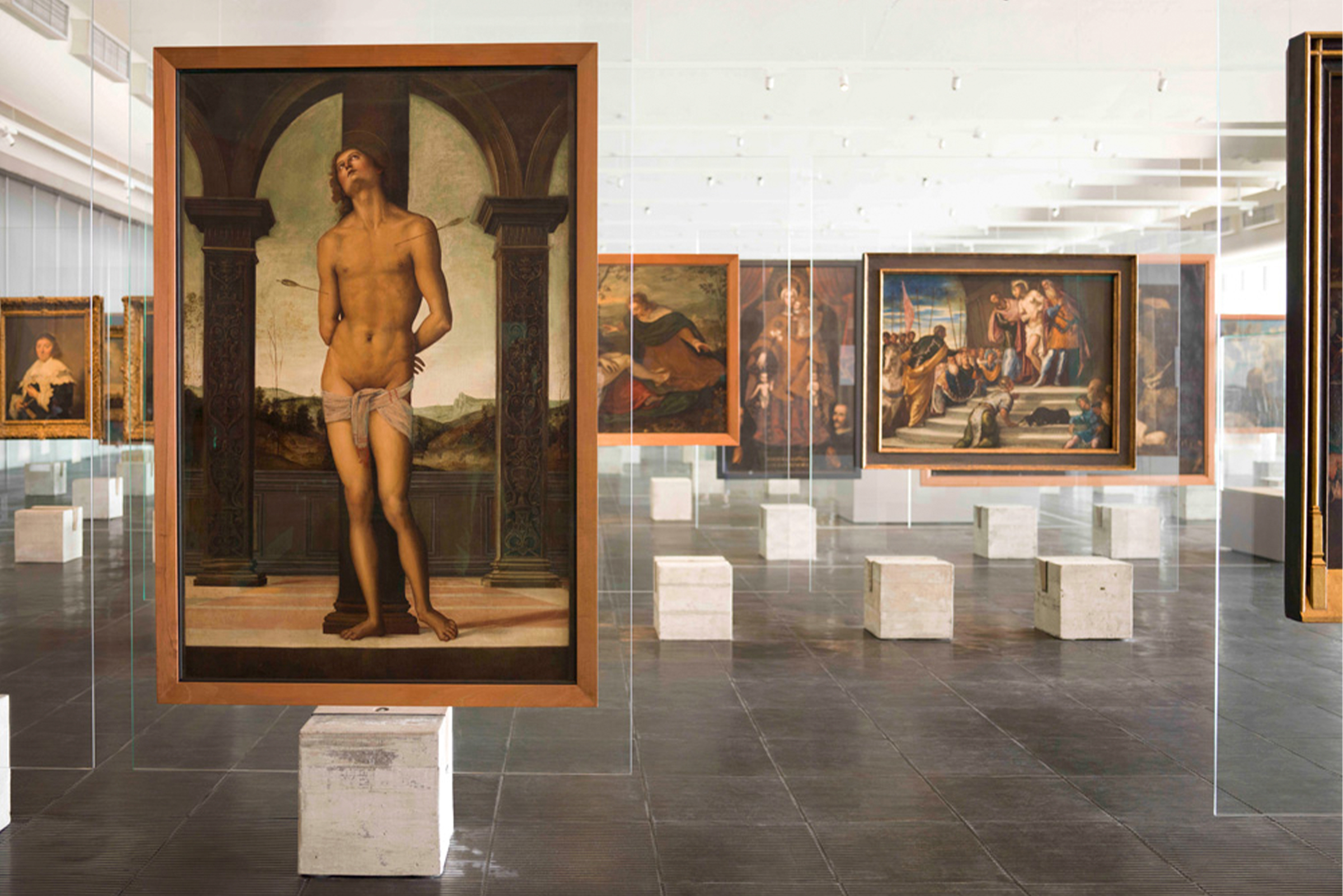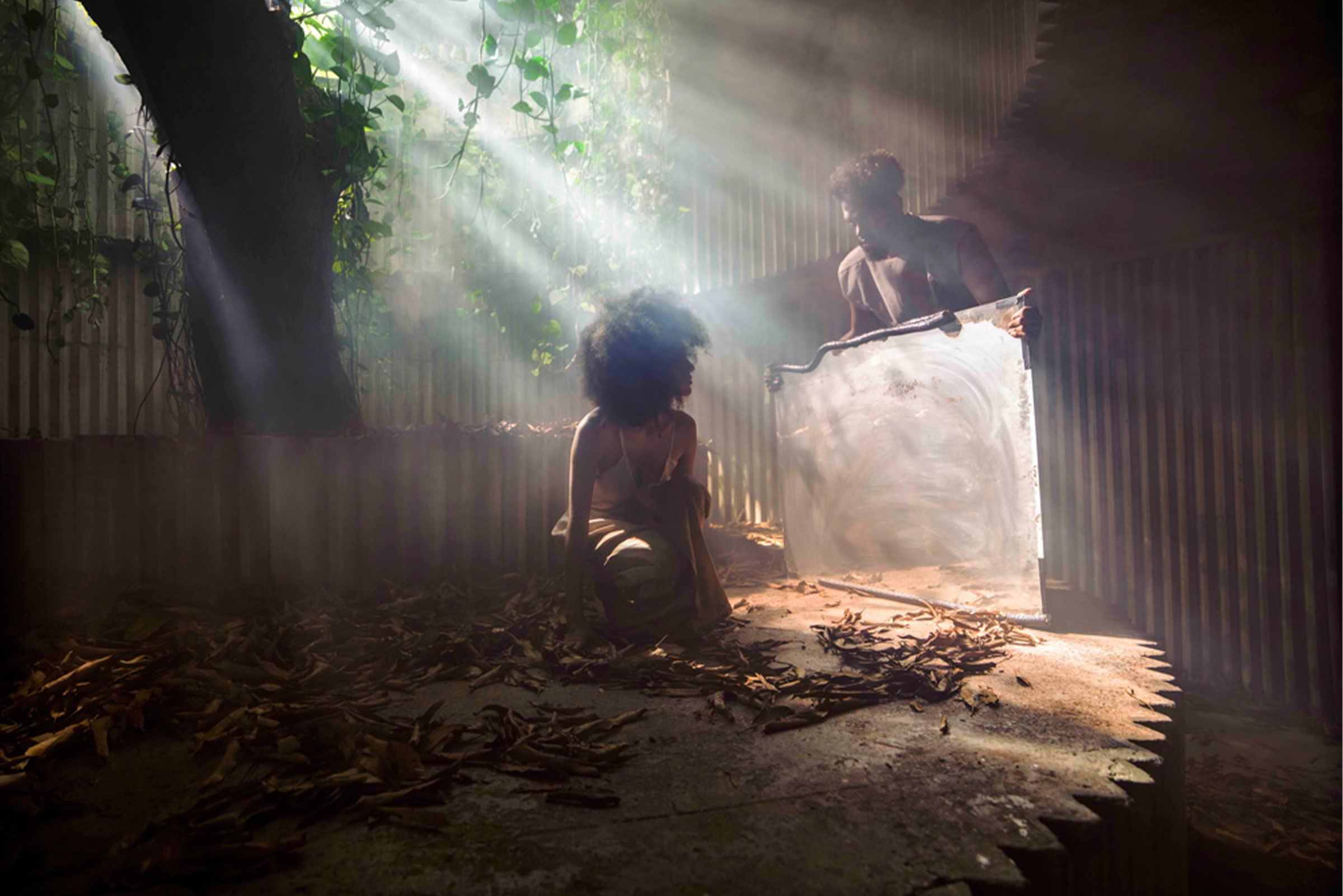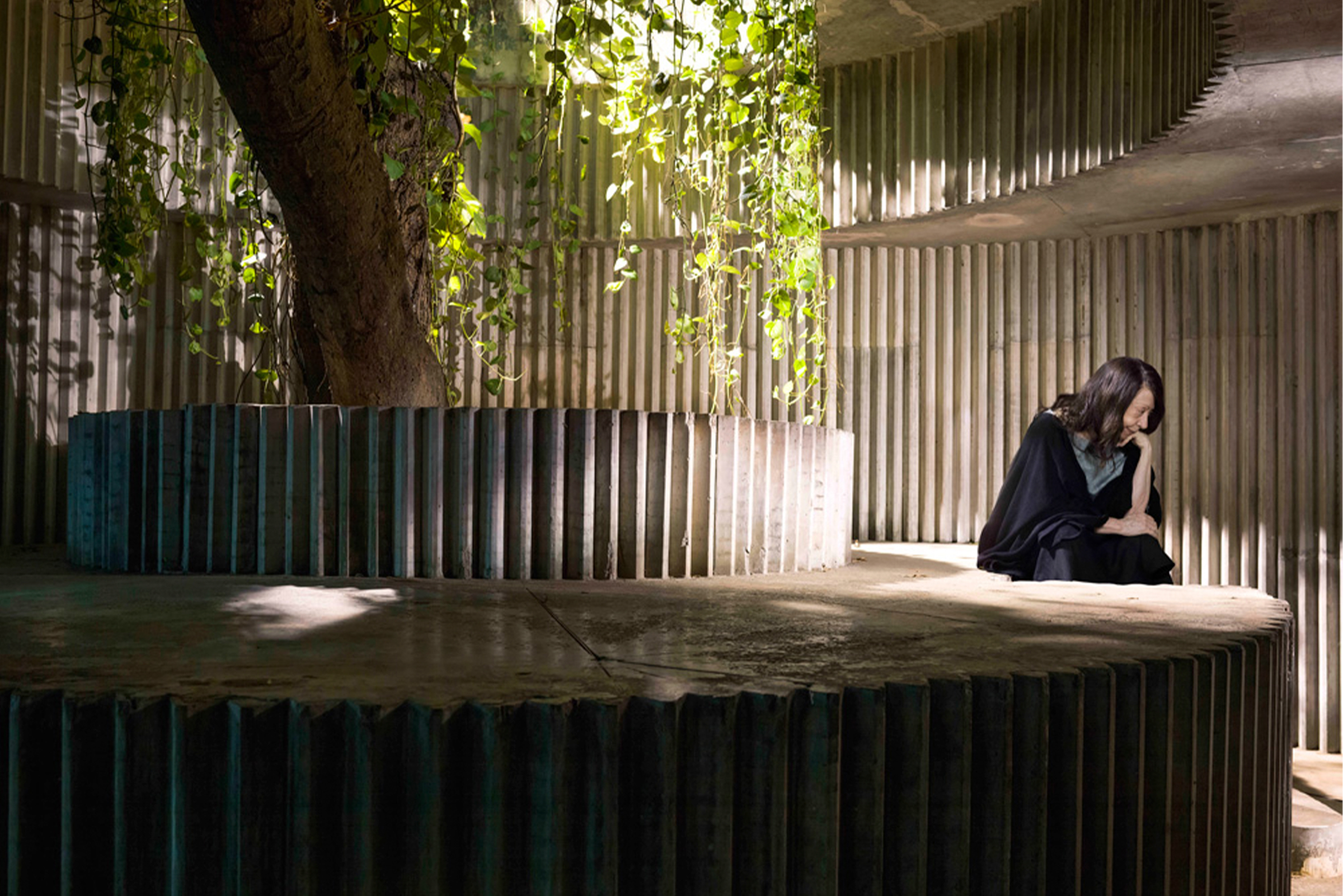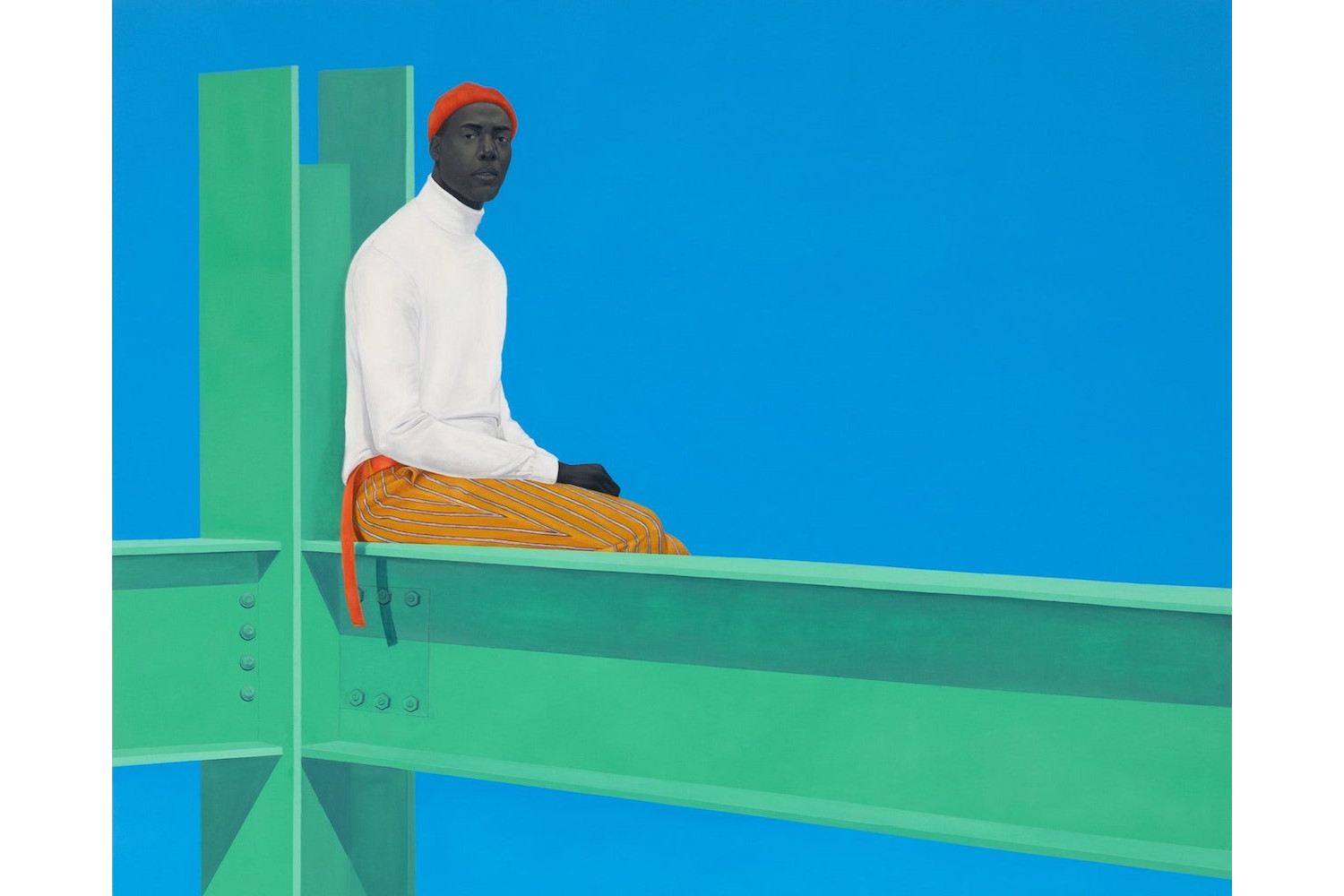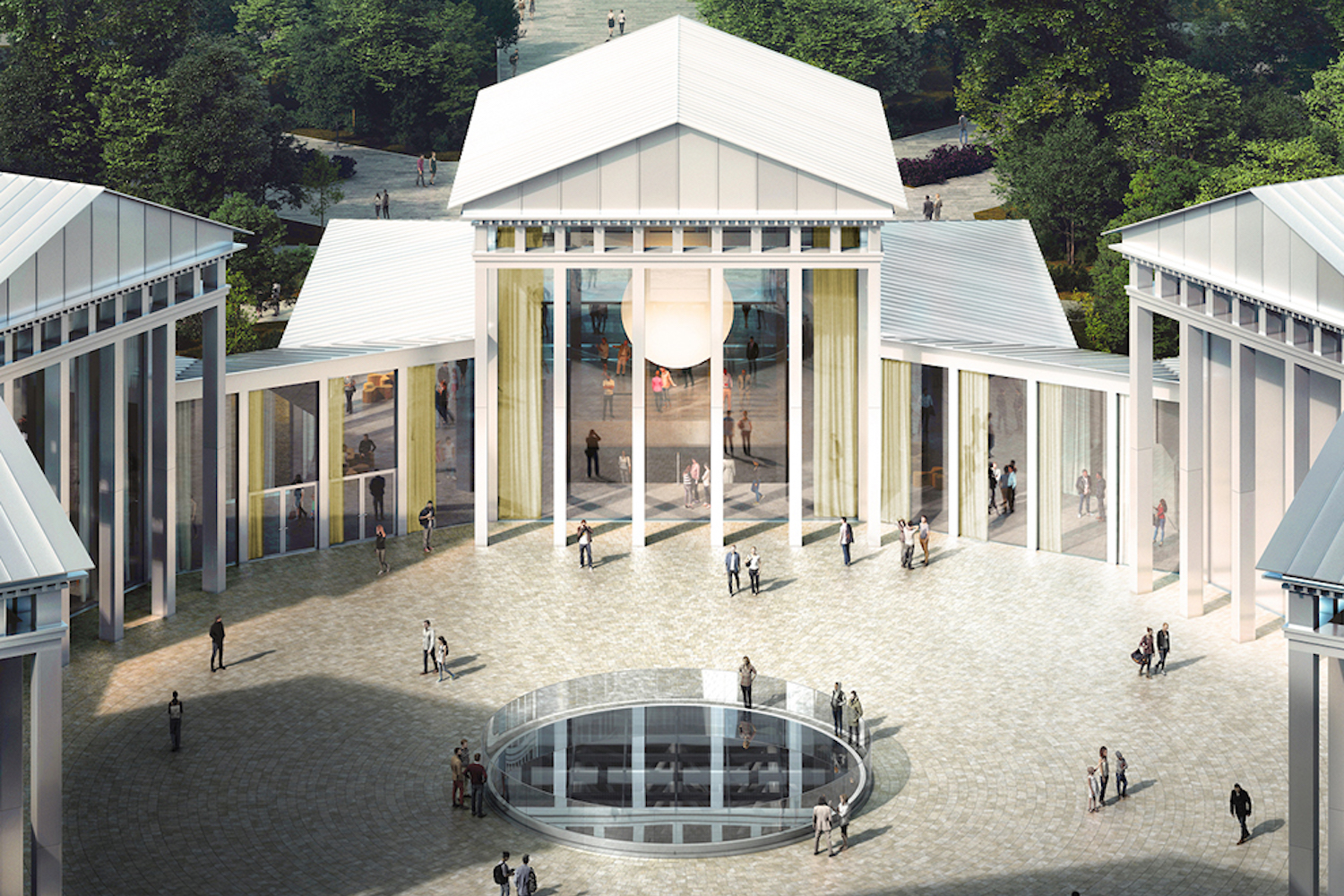Part homage, part hypothesis, “Isaac Julien: Lina Bo Bardi – A Marvelous Entanglement” (2019), on view at the Bechtler Museum of Modern Art, approaches the late Italian architect’s public works in Brazil as a melodic proposal. Radical for their time, Lina Bo Bardi’s architectural interventions in the latter half of the twentieth century remain transgressive today. Filmed on location in the SESC Pompéia, the São Paulo Museum of Art (MASP), and in the Teatro Oficina, Julien’s nine-screen installation focuses on Bo Bardi’s work and politics during a moment when the cultural exclusivity that institutions are seen to represent is being called into question by a broader public.
Octavia Bürgel: I’ll start by asking about your initial encounter with Lina Bo Bardi — when was it, and in what form? Through her buildings, her writings, in person?
Isaac Julien: There were two encounters with Lina Bo Bardi. The first one begins rather enigmatically in 1996, when we were invited by the Goethe-Institut to Salvador, Bahia. It was my first time in Brazil, along with a Brazilian actor who was in the Frantz Fanon film, Black Skin, White Mask (1995), which we had just completed. That was when I first came across the staircase at the Museu de Arte Moderna da Bahia (MAM), and I really wondered about it. It stayed with me for quite a long period.
In 2012, quite a few decades later, I was invited by Video Brazil to do a solo show at SESC Pompéia — the wonderful art center designed by Lina Bo Bardi. It was originally, I think, an oil drum factory, and she adapted and re-conserved the building but added in her own brutalist architecture interventions. I think what is amazing about that space is how it’s designed for people, as opposed to for architectural spectacle. People from all walks of life utilize the art center. She designed everything from chairs to the library, the theater, and the exhibition space where I was invited to show my work. I began working with a young architect who had worked with Lina Bo Bardi and I soon realized that everything he designed was in her style. But it kind of crept on me. From there, the romance, if you like, grew.
I was granted access to the disused culture center that Lina Bo Bardi had designed in Salvador by the Goethe-Institut in 2018. It happened to be located on the street which linked the port to the main uptown part of the city, named “the slope of mercy” by the slaves who had to carry heavy cargo up and down. This building, the Coatí Restaurant, became the center of my film as opposed to Lina Bo Bardi’s Glass House, which is a well-trodden curatorial excursion. I want to focus on what I see as Lina Bo Bardi’s hidden masterpieces. I was able to introduce a younger generation of performance artists working in Brazil and to collaborate with them on a number of different performances that take place in the film. When I worked with a Black dance company, ballet folklórico Senebra, they were able to perform under Lina Bo Bardi’s wooden staircase. We were able to go back to the archives and came across a performance that took place on the stairs in the 1960s, which we tried to reenact. The idea was to really question the utilization of the museum space. I think there’s a way in which architectural spaces offer this sort of appropriation for artists and performance.
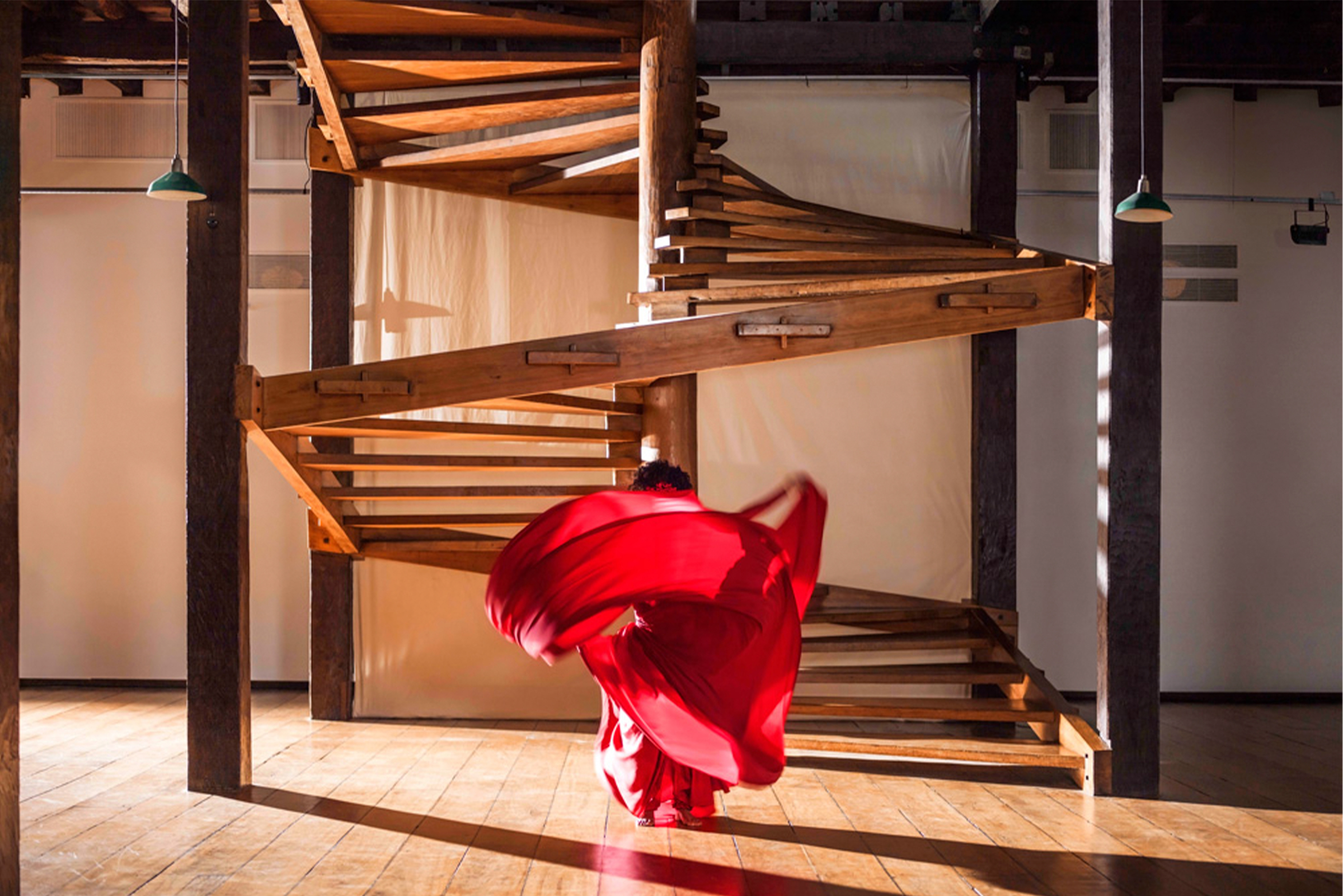
OB: Lina Bo Bardi herself was an Italian who moved to Brazil in the 1940s. She was a Marxist and a vocal anti-fascist, but I’m curious about the way that the film relates Condomblé and other Afro-indigenous traditions of Brazil to her.
IJ: I think Lina Bo Bardi, because of her understanding of the way in which design was implicitly connected to the artisanal practices of peasants and workers, was able to take that Italian approach, look at it in the context of the new country that she had arrived in, and translate that into architectural design. With the building of this staircase she replicated the techniques of how an ox and cart was architecturally put together by the indigenous and lower-class peasant population, with no nails or screws. I would say that is the methodology that she was involved in, in terms of her practice as an architect and also as a kind of curator. In Bahia, she was able to take icons of Condomblé and implant them in her buildings, basically to say that this was a spirit which was guiding that building. You can see the use of red, for example, in SESC Pompéia, you can see it in MASP as well. She’s utilizing these Condomblé colors as a kind of statement in the visualization, the sonography, of her design. What she did was to create a clearance under MASP — underneath the museum space — in the middle of São Paulo, which to this very day is a space where congregations of demonstrations against the country’s current president take place underneath, which I think she deliberately knew. As opposed to Oscar Niemeyer, who designed more for spectacle. As much as I admire his works, antithetically, if we take his design of Brasilia — the government city — and compare that to SESC Pompéia, you can see that the latter is really a different utilitarian use of design, to do with how the spectator interacts with the space. That’s not to deny that Brasilia architecturally looks really quite amazing. It’s just to say that it’s a different philosophical position, I think, that Bo Bardi was designing her works from. One perhaps more strongly connected to an emancipatory aspect.
OB: The question “What is a museum?” serves equally as a guiding question in Lina Bo Bardi’s practice, as in your film. I wonder if you could respond to that question from your own perspective?
IJ: I think she wanted to propose a more radical constitution of how we look at artworks in correspondence to other artworks. There is much talk now of the decolonial museum, or the project of decolonizing museums, but I think the trajectories of those debates have their intercedes in some of the work that Lina Bo Bardi was involved in. We know that the museum has a very violent history on which it bases its aesthetics and is unacknowledged. You could say that in this modernist period, formal challenges are being presented conceptually about what the museum constitutes, its distribution of artworks, how we view them.
OB: That being said, I don’t know to what extent these ideas are still being grappled with in terms of a formal or structural sense. I get the impression that museums are trying to move toward some kind of anti-colonial framework, but it seems to stop at a programmatic approach rather than a conceptual, architectural one.
IJ: I think Adriano Pedrosa at MASP is doing an interesting intervention in the museum. There is a certain consciousness in the Lina Bo Bardi spaces, even Museu de Arte Moderna da Bahia (MAMB). Although it’s a very poor museum, it attempts to make a radical program. I think it would be interesting to look at the conceptual, structural, and cinematographic interventions that have been made by these museums — both in their concept and design — as a way of deepening this decolonial museum gesture. Moving away from the mainly programmatic, as you say, into a more dialectical proposition that radically rearranges the way that we think about museums.
I would say that Lina Bo Bardi: A Marvelous Entanglement is an homage to some of these questions. It’s a translation of her ideas, from the architectonic into a cinematic language. The spatialization of multiple-screen works already provides its own architecture. We see that proposition in Lina Bo Bardi’s text, which is reenacted by Fernanda Montenegro and Fernanda Torres. You get an idea of a performance from this, which is both an homage and also a play for rendition. That comes through, especially when Fernanda Montenegro and Saso — who was a very good friend and collaborator of Lina Bo Bardi’s — meet in Oficina, which is Lina Bo Bardi’s last building. In the film, they have a whole conversation around entanglement and time and temporality. There’s a playful fluidity that’s enacted through those performances and the question of time.
OB: The refrain Fernanda Montenegro and Saso repeat in the film is one of Lina Bo Bardi’s famous quotes: “Linear time is a Western invention. Time is not linear. It is a marvelous entanglement where at any moment, points can be chosen and solutions invented, without beginning or end.” I have been thinking about your position in all of this, too.
IJ: I’m interested in thinking about questions, which one might view as modernist inquiries, into history or historical figures. I am thinking through what is perceived as a moment of new technologies and digitalization and those effects. I’m not opposed to them, but I feel that they pose questions that haunt our present moment. If there is any nostalgia in my work, it would be a critical nostalgia. I see Lina Bo Bardi as an outsider who could perhaps say something about Brazilian culture that people who were within it maybe could not. I would say that my role has been similar. I’m not African American, but I’ve taken many as my subjects. What is that position? All that kind of interpositionality, the transnationalism — they’re all in the works. Lina Bo Bardi was an Italian woman architect who went to the South and through her political grounding, maybe her interest in Gramsci, she was able to look at her surroundings in a new way from the local bourgeoisie who maybe had all the prejudices intact from a colonial period. When I think about my film Looking for Langston (1989), in a way, you could say that it is looking at the position of being constructed outside of one’s own community, around questions of sexuality, etcetera. These are the ways in which I think the works between Bo Bardi and myself are conversive.

